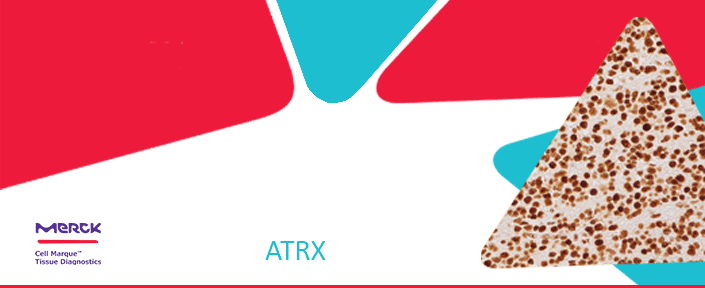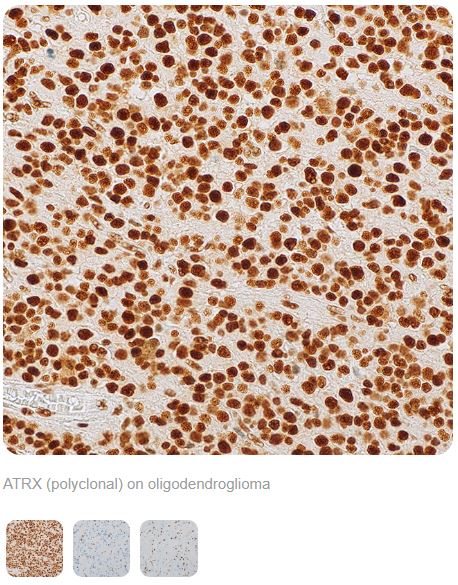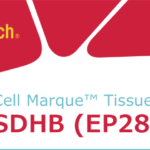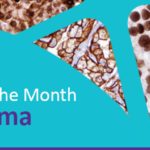Cell Marque ATRX Rabbit Polyclonal Antibody
Products are for professional/laboratory use only.
Diffuse gliomas are classified based on histological and molecular features to achieve an integrated diagnosis. Molecular diagnostic markers include IDH mutation, 1p/19q co-deletion, and TP53 mutation. ATRX is a chromatin remodeling protein and its mutation status may be used as a molecular diagnostic marker within the diffuse glioma classification algorithm.
Anti-ATRX is used to identify mutant ATRX by a loss of ATRX expression in neoplastic cells when compared with internal positive controls (endothelial cells, glia, and neurons). Grade II/III astrocytoma classification includes IDH mutant, ATRX mutant, and 1p/19q retention, while grade II/III oligodendroglioma includes IDH mutant, ATRX wildtype, and 1p/19q co-deletion; p53 expression may also serve as an aid in diagnosis. ATRX mutation is frequently, but not always, mutually exclusive with 1p/19q co-deletion.1-6
References
- Cancer Genome Atlas Research Network. Comprehensive, Integrative Genomic Analysis of Diffuse Lower-Grade Gliomas. N Engl J Med. 2015 Jun 25;372(26):2481-98.
- Reuss DE, et al. ATRX and IDH1-R132H immunohistochemistry with subsequent copy number analysis and IDH sequencing as a basis for an “integrated” diagnostic approach for adult astrocytoma, oligodendroglioma and glioblastoma. Acta Neuropathol. 2015 Jan;129(1):133-46.
- Louis DN, et al. The 2016 World Health Organization Classification of Tumors of the Central Nervous System: a summary. Acta Neuropathol. 2016 Jun;131(6):803-20.
- Ikemura M, et al. Utility of ATRX immunohistochemistry in diagnosis of adult diffuse gliomas. Histopathology. 2016 Aug;69(2):260-7.
- Yamamichi A, et al. Immunohistochemical ATRX expression is not a surrogate for 1p19q codeletion. Brain Tumor Pathol. 2018 Apr;35(2):106-113.
- Wood MD, et al. Applications of molecular neuro-oncology – a review of diffuse glioma integrated diagnosis and emerging molecular entities. Diagn Pathol. 2019 Apr 9;14(1):29.









